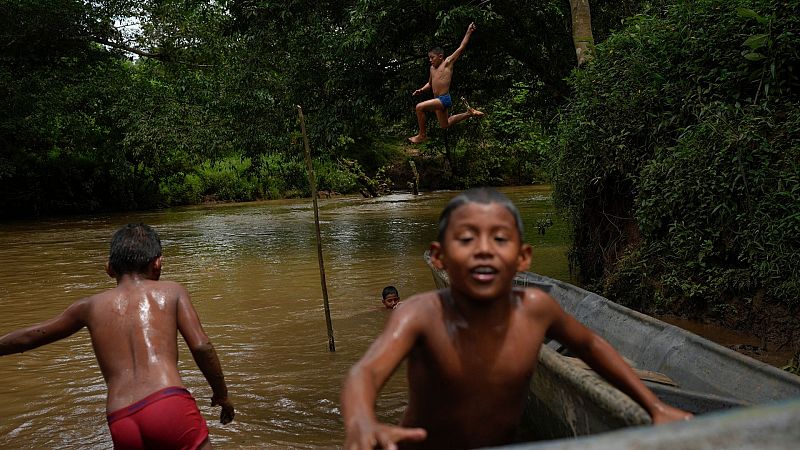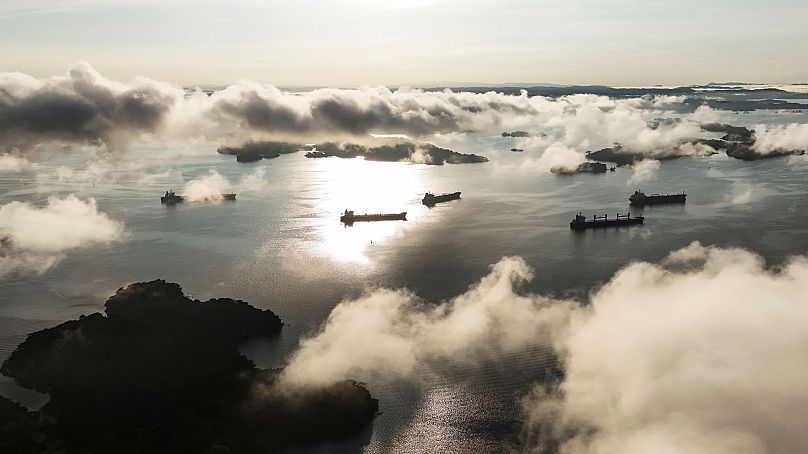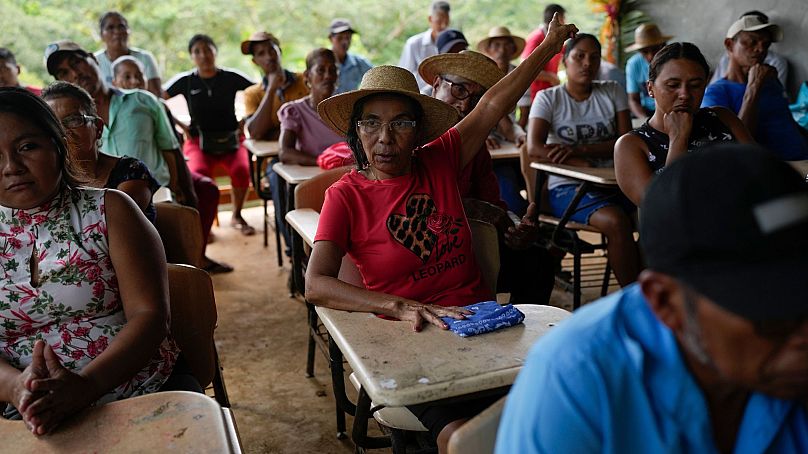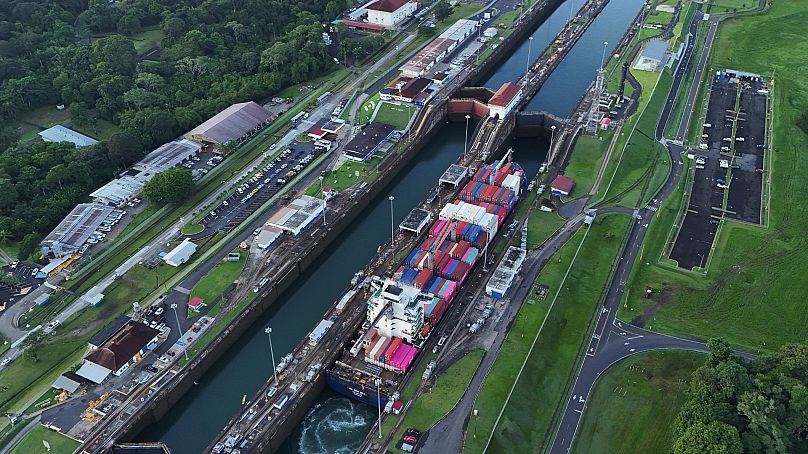‘No to the reservoirs’: Why are locals against this plan to save the drought-hit Panama Canal?

A proposed dam on the Indio River could secure operations on the drought-hit Panama Canal.
But it also would flood villages, where about 2,000 people would need to be relocated, and curb the flow of the river to other communities downstream.
Those living downstream know the mega-project will substantially alter the river, but they hope it will bring jobs, potable water, electricity and roads to their remote communities and not just leave them impoverished.
"We, as the Panama Canal, understand that many of these areas have been abandoned in terms of basic services,” says María Antonio of the Panama Canal Authority as she heads into the affected villages to hear local opposition to the plan.
Dam could secure Panama Canal in the face of erratic weather
The Panama Canal was completed in 1914 and generates about a quarter of the government's budget.
Last year, the canal authority reduced the number of ships that could cross daily by about 20 per cent because rains hadn’t replenished the reservoirs used to operate the locks, which need about 190 million litres of fresh water for each ship.
It led to shipping delays, and in some cases companies looking for alternatives. By the time restrictions were lifted this month, demand had fallen.
To avoid a repeat due to drought exacerbated by climate change, the plan to dam the Indio River was revived.
The proposed dam would secure the water needed to ensure the canal’s uninterrupted operation at a time of increasingly erratic weather.
The plan received a boost this summer with a ruling from Panama’s Supreme Court. For years, Panama has wanted to build another reservoir to supplement the main supply of water from Lake Gatun - a large human-made lake and part of the canal’s route - but a 2006 regulation prohibited the canal from expansion outside its traditional watershed. The Supreme Court’s decision allowed a re-interpretation of the boundaries.
The Indio runs roughly parallel to the canal, through the isthmus. The new reservoir on the Indio would sit southwest of Lake Gatun and supplement the water from there and what comes from the much smaller Alhajuela Lake to the east. The Indio reservoir would allow an estimated 12 to 13 additional canal crossings each day.
The reservoirs also provide water to the more than 2 million people - half the country’s population - living in the capital.
'That river is our highway and our everything'
Visiting residents from El Jobo and Guayabalito - two communities that won't be flooded - Antonio and her colleague held an outreach meeting in August.
She said that canal officials are talking to affected residents to figure out their needs, especially if they are from the 37 tiny villages where residents would have to be relocated.
Canal authorities have said the Indio is not the only solution they’re considering, but just days earlier canal administrator Ricaurte Catín Vásquez said it would be the most efficient option, because it has been studied for at least 40 years.
That’s nearly as long as Jeronima Figueroa, 60, has lived along the Indio in El Jobo. Besides being the area’s critical transportation link, the Indio provides water for drinking, washing clothes and watering their crops, she said.
“That river is our highway and our everything,” she said.
The dam's effect on the river's flow was top of mind for the assembled residents, along with why the reservoir is needed, what would the water be used for, which communities would have to relocate, how property titles would be handled, would the construction pollute the river.
Puria Nuñez of El Jobo summed up the fears: “Our river isn’t going to be the same Indio River.”
Could the reservoir project bring real change to local communities?
Kenny Alexander Macero, a 21-year-old father who raises livestock in Guayabalito, said it was clear to him that the reservoir would make the canal a lot of money, but he wanted to see it spur real change for his family and others in the area.
“I’m not against the project, it’s going to generate a lot of work for people who need it, but you should be sincere in saying that ‘we’re going to bring projects to the communities that live in that area,’” he said. “We want highways. Don’t try to fool us.”
One complication was that while the canal authorities would be in charge of the reservoir project, the federal government would have to carry out the region's major development projects. And the feds weren’t in the room.
The project is not a guarantee of other benefits. There are communities along Lake Gatun that don’t have potable water.
Gilberto Toro, a community development consultant not involved in the canal project, said that the canal administration is actually more trusted by people than Panama’s federal government, because it hasn’t been enmeshed in as many scandals.
“Everybody knows that the canal projects come with a seal of guarantee,” Toro said. “So a lot of people want to negotiate with the canal in some way because they know what they’re going to offer isn’t going to be trinkets.”
Figueroa expressed similar faith in the canal administrators, but said that residents would need to monitor them closely to avoid being overlooked. “We can’t keep living far behind like this,” she said. “We don’t have electricity, water, healthcare and education."
'No to the reservoirs': Local opposition to the project
President José Raúl Mulino has said a decision about the Indio River project would come next year. The canal administration ultimately will decide, but the project would require coordination with the federal government. No public vote is necessary, but the canal administrator has said they are looking to arrive at a public consensus.
Opposition has emerged, not surprisingly, in communities that would be flooded.
Among those is Limon, where the canal representatives parked their car and boarded a boat to El Jobo. It’s where the reservoir’s dam would be constructed. The highway only arrived there two years ago and the community still has many needs.
Olegario Hernández has had a sign out in front of his home in Limon for the past year that says: “No to the reservoirs.”
The 86-year-old farmer was born there and raised his six children there. His children all left the area in search of opportunities, but Hernández wants to stay.
“We don’t need to leave," Hernández said, but the canal administration “wants to kick us out”.
Yesterday




